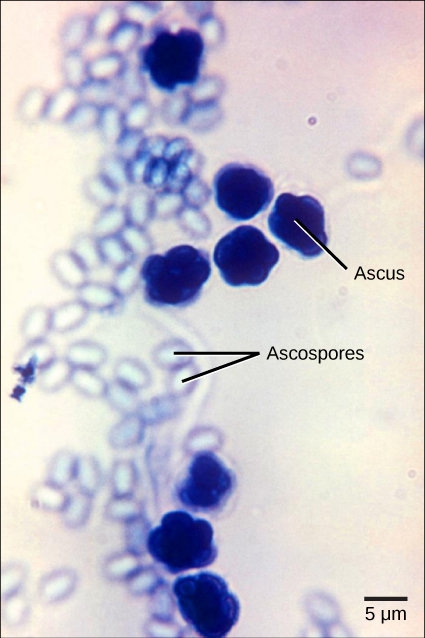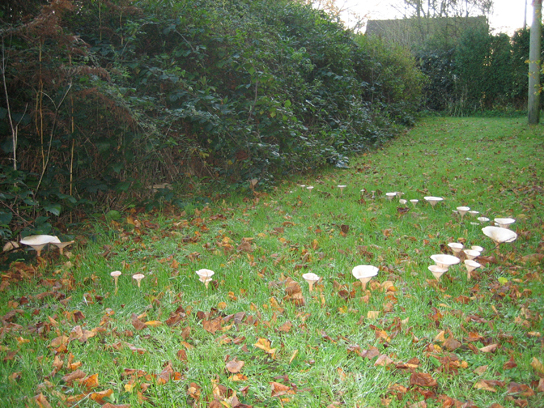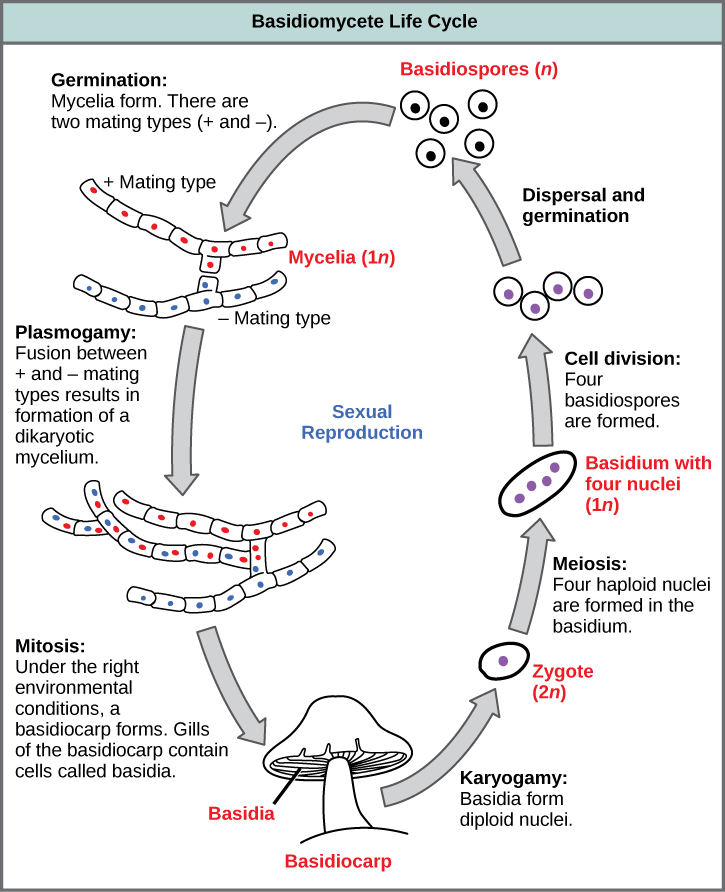| << Chapter < Page | Chapter >> Page > |
The majority of known fungi belong to the Phylum Ascomycota , which is characterized by the formation of an ascus (plural, asci), a sac-like structure that contains haploid ascospores. Many ascomycetes are of commercial importance. Some play a beneficial role, such as the yeasts used in baking, brewing, and wine fermentation, plus truffles and morels, which are held as gourmet delicacies. Aspergillus oryzae is used in the fermentation of rice to produce sake. Other ascomycetes parasitize plants and animals, including humans. For example, fungal pneumonia poses a significant threat to AIDS patients who have a compromised immune system. Ascomycetes not only infest and destroy crops directly; they also produce poisonous secondary metabolites that make crops unfit for consumption. Filamentous ascomycetes produce hyphae divided by perforated septa, allowing streaming of cytoplasm from one cell to the other. Conidia and asci, which are used respectively for asexual and sexual reproductions. During sexual reproduction, thousands of asci fill a fruiting body called the ascocarp .


The fungi in the Phylum Basidiomycota are easily recognizable under a light microscope by their club-shaped fruiting bodies called basidia (singular, basidium ), which are the swollen terminal cell of a hypha. The basidia, which are the reproductive organs of these fungi, are often contained within the familiar mushroom, commonly seen in fields after rain, on the supermarket shelves, and growing on your lawn ( [link] ). These mushroom-producing basidiomyces are sometimes referred to as “gill fungi” because of the presence of gill-like structures on the underside of the cap. The “gills” are actually compacted hyphae on which the basidia are borne. This group also includes shelf fungus, which cling to the bark of trees like small shelves. In addition, the basidiomycota includes smuts and rusts, which are important plant pathogens; toadstools, and shelf fungi stacked on tree trunks. Most edible fungi belong to the Phylum Basidiomycota; however, some basidiomycetes produce deadly toxins. For example, Cryptococcus neoformans causes severe respiratory illness.

The lifecycle of basidiomycetes includes alternation of generations ( [link] ). The club-shaped basidium carries spores called basidiospores. Eventually, the mycelium generates a basidiocarp , which is a fruiting body that protrudes from the ground—this is what we think of as a mushroom. The basidiocarp bears the developing basidia on the gills under its cap.

Which of the following statements is true?
The Glomeromycota is a newly established phylum which comprises about 230 species that all live in close association with the roots of trees. Fossil records indicate that trees and their root symbionts share a long evolutionary history. It appears that all members of this family interact with the root cells forming a mutually beneficial association where the plants supply the carbon source and energy in the form of carbohydrates to the fungus, and the fungus supplies essential minerals from the soil to the plant.
The glomeromycetes do not reproduce sexually and do not survive without the presence of plant roots. DNA analysis shows that all glomeromycetes probably descended from a common ancestor, making them a monophyletic lineage.
Chytridiomycota (chytrids) are considered the most primitive group of fungi. They are mostly aquatic, and their gametes are the only fungal cells known to have flagella. They reproduce both sexually and asexually; the asexual spores are called zoospores. Zygomycota (zygote fungi) produce non-septated hyphae with many nuclei. Their hyphae fuse during sexual reproduction to produce a zygospore in a zygosporangium. Ascomycota (sac fungi) form spores in sacs called asci during sexual reproduction. Asexual reproduction is their most common form of reproduction. Basidiomycota (club fungi) produce showy fruiting bodies that contain basidia in the form of clubs. Spores are stored in the basidia. Most familiar mushrooms belong to this division. Deuteromycota (imperfect fungi) belong to a polyphyletic group that does not reproduce through sexual reproduction. Glomeromycota form tight associations (called mycorrhizae) with the roots of plants.
[link] Which of the following statements is true?
[link] D

Notification Switch
Would you like to follow the 'Bi 101 for lbcc ilearn campus' conversation and receive update notifications?